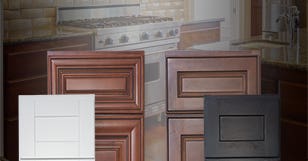What is a Warping
Warping occurs when wood dries unevenly. Lumber fibers contract as moisture leaves the wood, and that contraction can occur at different rates if the departure of moisture is accordingly unbalanced. The main way to avoid warping in cabinets is to ensure that the wood used has been completely dried before any work is done with it. Warping typically manifests in five different ways:
Bowing: More common to long boards, bowing occurs when the fibers on the bottom side of a piece of wood dry slower than those on the top, resulting in both sides contracting and pulling the wood into a shape resembling an archer's bow.Crook: Crooking is the result of the edges of a board drying faster than the middle, causing the wood to warp to the side.Kink: A localized crook that is often caused by the presence of a knot.Cup: A warp across the width of the wood that raises or lowers the edges above or below the rest of the board.Twist: A warp that causes the two ends of the board to twist in different directions, resulting in them not lying on the same plane.